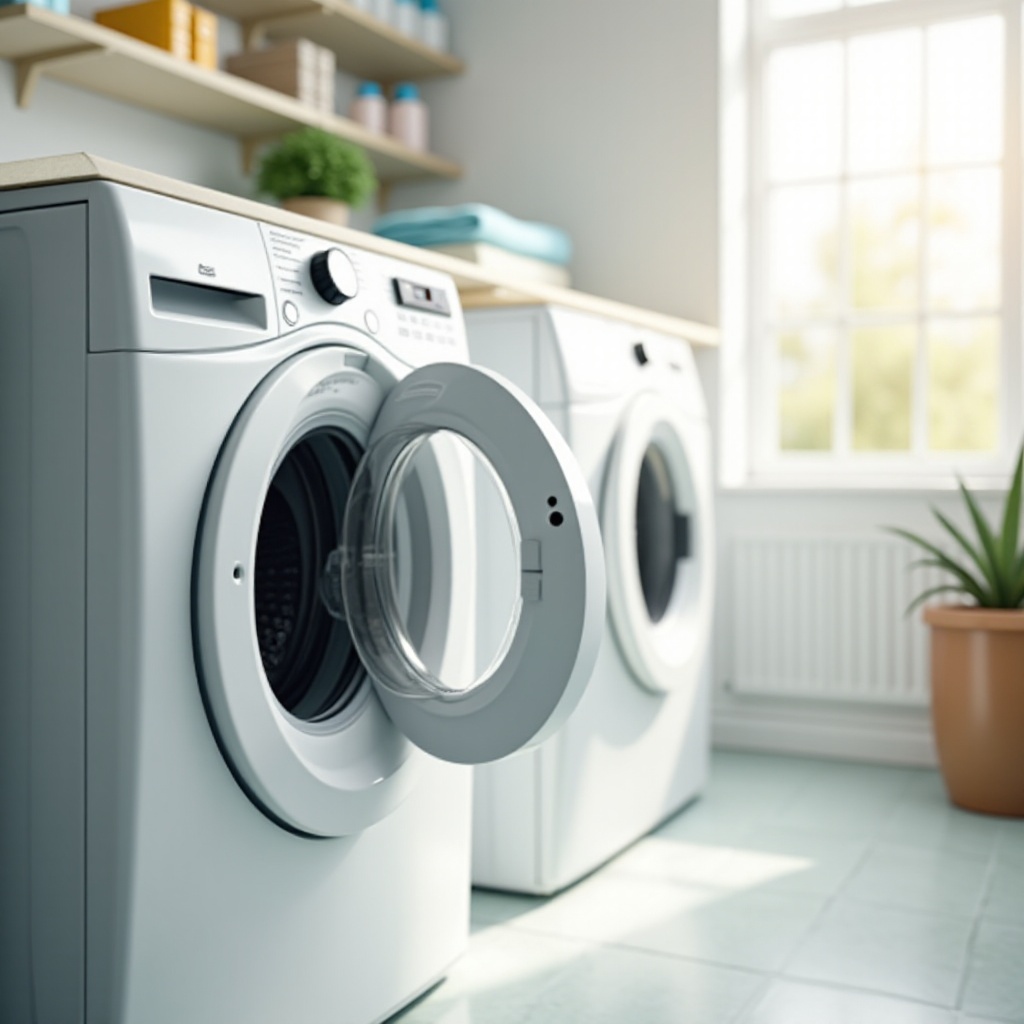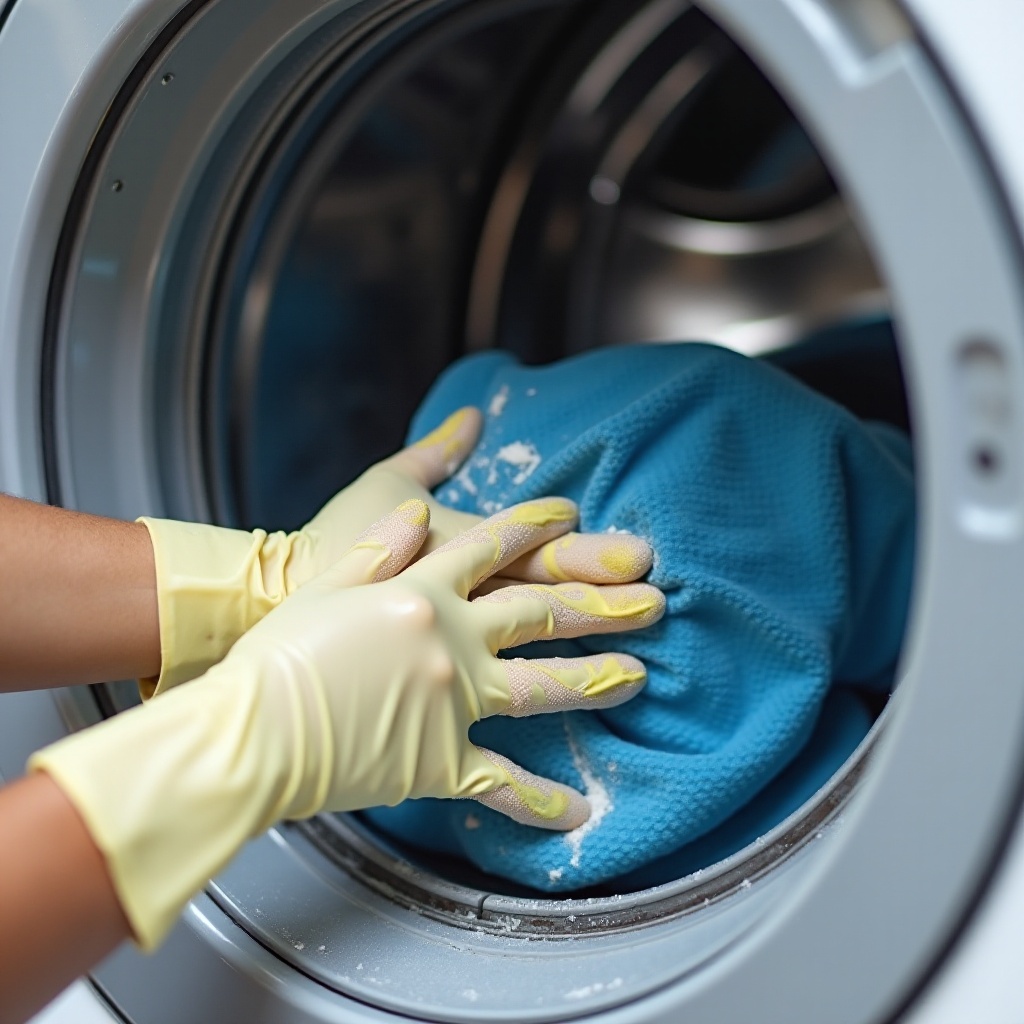Introduction
Mildew in front loading washers is a common yet frustrating problem. The dark, damp environment inside the washer is an ideal breeding ground for mildew, which can lead to unpleasant odors and even health issues. Addressing mildew effectively not only keeps your washer smelling fresh but also prolongs its lifespan.
Understanding the root causes of mildew growth in your washing machine is crucial. Once you know what contributes to this issue, you can take proactive steps to mitigate it. Simple daily habits, combined with a regular cleaning routine, can make a huge difference. This guide will walk you through everything you need to know to keep mildew at bay in your front loading washer.

What Causes Mildew in Front Loading Washers?
Mildew thrives in moisture-rich environments, making your front loading washer particularly susceptible. The following factors contribute to mildew growth:
- Sealed Environment: Front loading washers have a tighter seal compared to top loaders, trapping moisture inside.
- Residual Detergent and Fabric Softener: Leftover detergent and softener in the washer drum and gasket provide a food source for mildew.
- Gasket and Seals: The rubber gasket around the door, designed to prevent leaks, often retains water and organic matter, creating an ideal spot for mildew.
Knowing these causes can help you understand why prevention is key.
Daily Habits to Prevent Mildew
Incorporating simple daily routines can significantly reduce the risk of mildew.
Leave the Door Open
After each wash cycle, leave the door slightly ajar. This allows the interior to dry out, preventing the trapped moisture that mildew loves.
Wipe Down the Gasket
After your laundry, take a moment to wipe down the rubber gasket and the door. Use a dry cloth to remove any remaining water. This small step can prevent water buildup and eliminate one of mildew's primary habitats.
Use Proper Detergents
Choosing the right type and amount of detergent is crucial. Opt for high-efficiency (HE) detergents, which produce fewer suds and reduce residue. Also, avoid using excess detergent and fabric softener, which can leave behind mildew-friendly films.
These daily habits are simple yet effective in maintaining a mildew-free environment in your washer.
Weekly and Monthly Maintenance
Even with daily care, weekly and monthly maintenance is necessary to keep your washer in top condition.
Weekly Checklist
Each week, run an empty wash cycle with hot water and a cup of white vinegar. This helps to disinfect the drum and remove any odors. Additionally, wipe the inside of the washer drum and the door seal with a damp cloth.
Monthly Deep Cleaning Routine
Once a month, give your washer a thorough cleaning:1. Remove and Clean the Dispenser Drawer: Pull out the dispenser drawer and wash it with warm, soapy water to remove detergent buildup.2. Clean the Gasket: Scrub the gasket with a mixture of water and vinegar or a mild bleach solution.3. Run a Cleaning Cycle: Use a washing machine cleaner or a combination of vinegar and baking soda. Run a hot water cycle to clean the drum thoroughly.
Inspecting and Cleaning the Drain Hose
Regularly inspect the drain hose for clogs or kinks. Once a month, detach it and rinse it out to ensure unimpeded water flow. This not only prevents mildew but also improves your washing machine's efficiency.
Adhering to these weekly and monthly maintenance routines will significantly reduce mildew growth and keep your washer performing optimally.
Effective Methods for Removing Existing Mildew
If your washer already has mildew, don't worry. These steps will help you clean it thoroughly.
Using Household Ingredients
Common household items can be surprisingly effective:1. Vinegar and Baking Soda: Run an empty cycle with two cups of white vinegar. Follow with a second cycle using half a cup of baking soda. This combination breaks down mildew and deodorizes your washer.2. Lemon Juice and Hydrogen Peroxide: Create a mixture of lemon juice and hydrogen peroxide and use it to scrub the gasket and drum.
Best Store-Bought Solutions
Several commercially available products are designed to tackle washing machine mildew:1. Affresh Washer Cleaner Tablets: These tablets dissolve away residue and mildew with a simple hot water cycle.2. OxiClean Washing Machine Cleaner: Effective at breaking down organic deposits and eliminating odors.
Tips for Stubborn Mildew Spots
For particularly tough mildew spots:1. Bleach Solution: Use a solution of bleach and water (1 part bleach to 10 parts water). Scrub the affected areas thoroughly.2. Toothbrush Trick: Use an old toothbrush to reach into the crevices and scrub away mildew.
These methods ensure that even the most stubborn mildew is removed, restoring your washer's cleanliness.

Long-Term Maintenance Strategies
Preventing mildew isn't just about cleaning. Long-term maintenance plays a vital role.
Optimal Environment
Ensure your laundry area is well-ventilated. Using a dehumidifier can help reduce moisture levels, making it less hospitable for mildew.
Routine Inspections
Regularly inspect your washer and its components:1. Check the Gasket: Look for any signs of wear or damage that could harbor mildew.2. Inspect the Drain Pump Filter: Clean it out regularly to prevent blockages.
Choosing the Right Products
Opt for products designed to prevent mildew:1. High-Efficiency Detergents: Reduce the risk of residue buildup.2. Washing Machine Cleaner Tablets: Regular use keeps your washer fresh and clean.
Incorporating these long-term strategies ensures your washer stays mildew-free for years to come.

Conclusion
Mildew in front loading washers can be a persistent problem, but with the right approach, you can keep it under control. By understanding the causes and adopting daily, weekly, and monthly cleaning routines, as well as using effective removal techniques, you can maintain a clean and efficient washer. These practices not only prevent unpleasant odors but also extend the life of your washing machine.
Frequently Asked Questions
How often should I clean my front loading washer to prevent mildew?
To prevent mildew, follow a daily routine of leaving the door open and wiping the gasket. Perform weekly and monthly deep cleanings to keep your washer in optimal condition.
What is the most effective method for removing mildew from a front loading washer?
The most effective method involves running an empty cycle with vinegar and baking soda, followed by scrubbing with a mixture of lemon juice and hydrogen peroxide or using commercial cleaners like Affresh tablets.
Can I use regular bleach to clean mildew from my washer?
Yes, a diluted bleach solution can be effective for tough mildew spots. Use one part bleach to ten parts water, and scrub the affected areas thoroughly.
